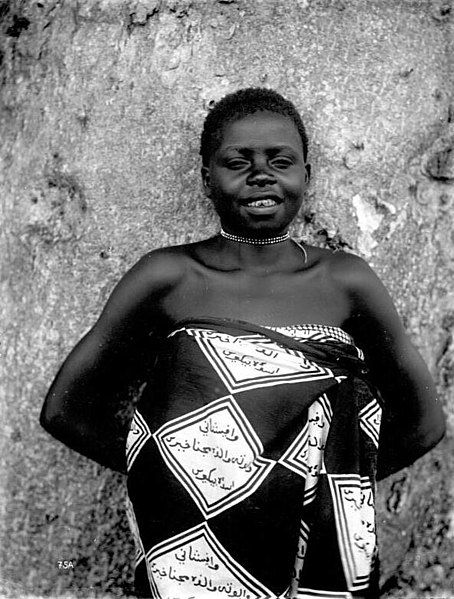The Swahili people comprise mainly Bantu, Afro-Arab and Comorian ethnic groups inhabiting the Swahili coast, an area encompassing the Zanzibar archipelago and mainland Tanzania's seaboard, littoral Kenya, northern Mozambique, the Comoros Islands and Northwest Madagascar.
Swahili Arabic script on a one-pysar coin from Zanzibar c. 1299 AH (1882 CE)
Swahili Arabic script on a carved wooden door (open) at Lamu in Kenya
Swahili Arabic script on wooden door in Fort Jesus, Mombasa in Kenya
Swahili, also known by its local name Kiswahili, is a Bantu language originally spoken by the Swahili people, who are found primarily in Tanzania, Kenya and Mozambique. The number of current Swahili speakers, be they native or second-language speakers, is estimated to be over 200 million, with Tanzania known to have most of the native speakers.
Although originally written with the Arabic script, Swahili is now written in a Latin alphabet introduced by Christian missionaries and colonial administrators. The text shown here is the Catholic version of the Lord's Prayer.
Swahili in Arabic script on the clothes of a girl in German East Africa (ca. early 1900s)
Loxodonta africana elephants frolic in Amboseli National Park, Kenya, 2012.






